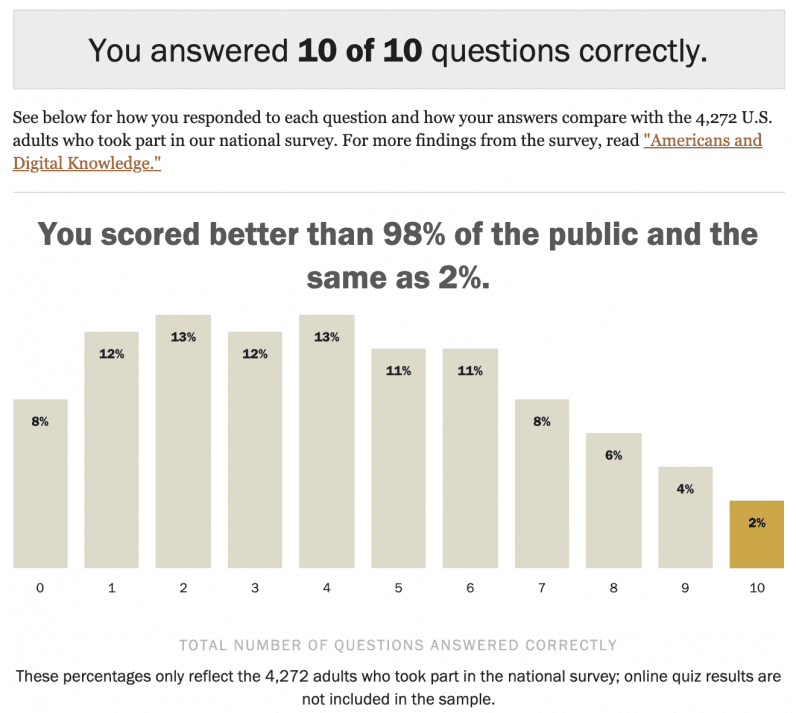
A study by Pew Research Center shows that few American’s have the expertise to effectively protect themselves online.
Most adults, for example, can answer questions about phishing scams or website cookies, but few (28 percent) can identify examples of two-factor authentication. And just 24 percent understand that private browsing only hides your browsing history from other users, not from the sites you’re browsing. About half (48 percent) are unsure what private browsing actually does, in fact.
The survey featured 10 questions, each designed to test the knowledge level of American adults on a variety of digital topics, ranging from cybersecurity and social media, to the businesses that power the internet’s biggest platforms.
Of those surveyed, the median number of correct answers was just four. Only 20 percent of adults answered seven or more questions correctly. Two percent answered all of the questions correctly.
There were a handful of questions that most answered correctly, such as knowing that phishing scams can occur across multiple platforms (67 percent). 63 percent of Americans understand the purpose of cookies in web browsing. And 59 percent know that advertising is the main source of revenue for most social media sites.
Only 30 percent of adults know that the “https” prefix means a website is encrypted. A similar number (29 percent) were aware that Facebook owned both WhatsApp and Instagram. Only 15 percent of Americans could identify Twitter CEO Jack Dorsey.
Unsurprisingly, the biggest correlation among respondents was in education level. Adults with a four year (or better) degree answered a median of six questions correctly, compared with just four for those without a college diploma.
Younger adults — again, unsurprisingly — fared better than older respondents. 18 to 29-year-olds, for example, answered a median five out of 10 questions correctly compared to those 65 and older, with a median correct response rate of three.
You can take the quiz yourself, here.

Get the TNW newsletter
Get the most important tech news in your inbox each week.





